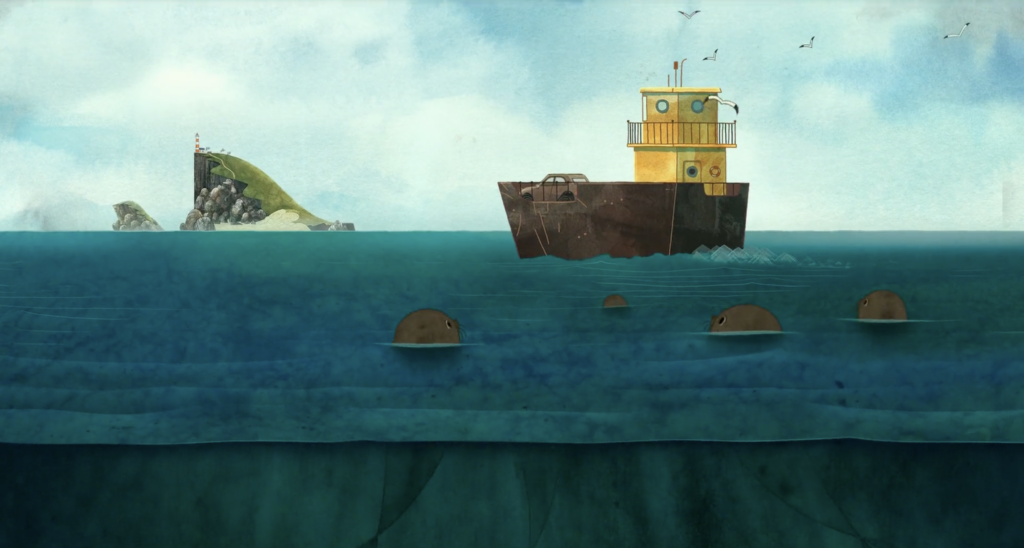Song of the Sea - Dingle Harbour
Cuan an Daingin
|
Dingle Harbour
Address
Fearann na Cille, Daingean Uí Chúis, Co. Chiarraí
52.137518
, -10.275246

Although Song of the Sea (2014) it is an animated feature, and therefore not strictly set in a real location, writer/director Tomm Moore credits an experience he had on Fionn Trá/Ventry Beach, encountering the bodies of dead seals, as an inspiration for its creation. Consequently, live sound effects and elements were captured in the local area by sound designer Felix Davin. In the interview below, Felix describes his experience here, and what scenes he used the sounds for. He mentions sounds for the ferry being recorded in Dingle Harbour.
It may be “in the name” that animated films are recognized most for their visuality, but as sound designer Felix Davin would attest vis-a-vis his reminiscences on recording sound effects for Song of the Sea around the Dingle Peninsula, the aural landscape presented by animated films is just a crucial to their reception by audiences. Indeed, it is still “in the name” of the audience: audiences are there to hear, just as much (and sometimes more than) to view…despite the fact we so often talk about the viewer first in cinema studies.
This is not to say the visuals in Song of the Sea are not absolutely stunning, like those of its sister films on Irish mythology, The Secret of Kells and Wolfwalkers, both from the same Cartoon Saloon team. Using traditional hand-drawn and watercolour-painted animation techniques, alongside CGI, the Cartoon Saloon artists create an immersive fantasy world grounded in the real-life landscape of Ireland, evoking magic and the otherworldly through the use of Celtic and Christian symbolism, patterning, and line work. Watching a Cartoon Saloon film is like stepping into an illuminated manuscript.
But to make it feel alive, to really immerse the audio-viewer, an animated film must also create a soundscape that variably complements, expands, and sometimes contradicts the linear progression of its visuals from frame to frame. Sound effects, dialogue and music – all elements of what Michel Chion calls the “audiovisual scene” – both drive the film perceptibly forward, providing temporal continuity from Point A to Point B, and make us, as audio-viewers, feel ourselves to be at a physical closeness or disconnect (as the case may be) from/with the objects or concepts presented on or by the screen. Sound moves through us, on us, and around us as it comes to us in waves – a more full-body experience, arguably, than that entailed by simply “looking at” something: like a camera points and shoots, the eye picks up and analyzes. Sound surrounds us.
Song of the Sea, like all the work of the Cartoon Saloon artists, enhances its immersive affect through a detailed and multi-layered sound design. This is, no doubt, a reflection of the sound designers’ and animators’ experiences of the Irish landscape, which oscillates between sprawling, overwhelming, nuanced, and calming. Nowhere else are the vicissitudes of the Irish landscape better presented in real life than in and around the shores of Ventry and Dingle Bay.
Videos
Links
- » https://en.wikipedia.org/wiki/Song_of_the_Sea_(2014_film)
- » https://www.imdb.com/title/tt1865505/
- »http://web.archive.org/web/20201108123407/https://www.irishexaminer.com/lifestyle/arid-20345273.html
- » http://songoftheseamovie.blogspot.com/2014/03/sounds-of-sea.html?m=1
- » http://www.felixdavin.com/sots

